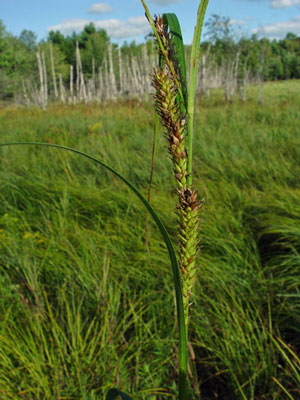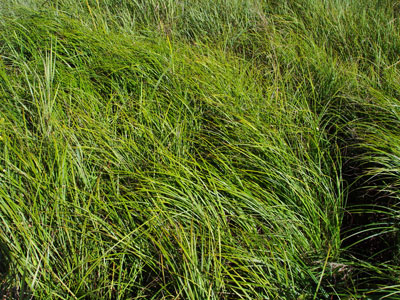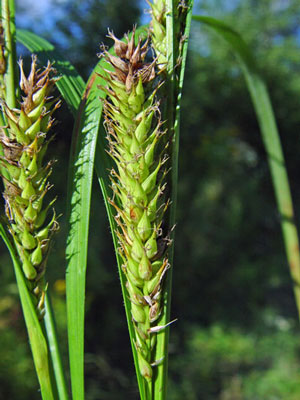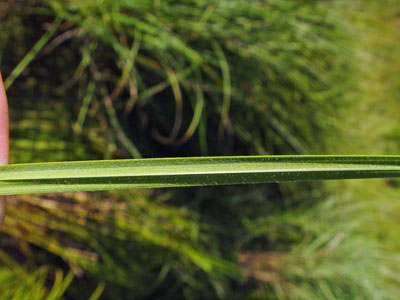DACF Home → Bureaus & Programs → Maine Natural Areas Program → Communities, Plants, and Animals → Rare Plants → Carex atherodes

Carex atherodes Spreng.
Awned Sedge
- State Rank: S1
- Global Rank: G5
- State Status: Endangered
Habitat: Calcareous meadows, swales, and shores [Coastal non-tidal wetland (non-forested, wetland)]

Range: Circumboreal, south to Maine, West Virginia, Colorado, and Utah.
Aids to Identification: Members of this genus can be difficult to identify without careful examination of microscopic features and knowledge of general groups of species. Carex atherodes is characterized by stout, solitary stems, or a few growing together, to a height of 0.3-1.5 meters. The stems grow from long rhizomes, and the leaf blades closest to the base are reduced to scales. The other blades are 4-10 mm wide, with coarse hairs beneath toward the base of the blade. The perigynia have 12-20 ribs, lack hairs, and are flattened toward the beak. The beak is well-developed with 2 prominent teeth. The hairy leaves plus hairless perigynia distinguish this species from other Maine Carex.

Ecological characteristics: Unknown
Phenology: Perennial; fruits June - August.
Family: Cyperaceae
Synonyms: None noted.
Known Distribution in Maine: This rare plant has been documented from a total of 1 town(s) in the following county(ies): Knox.
Dates of documented observations are: 1920, 1998, 2000
Reason(s) for rarity: At southern limit of range.

Conservation considerations: The known population is in a wet meadow bisected by a road. Maintenance of the hydrology is presumably important in this plant's persistence.
For more information, see the Native Plant Trust's Conservation Plan for Carex atherodes.